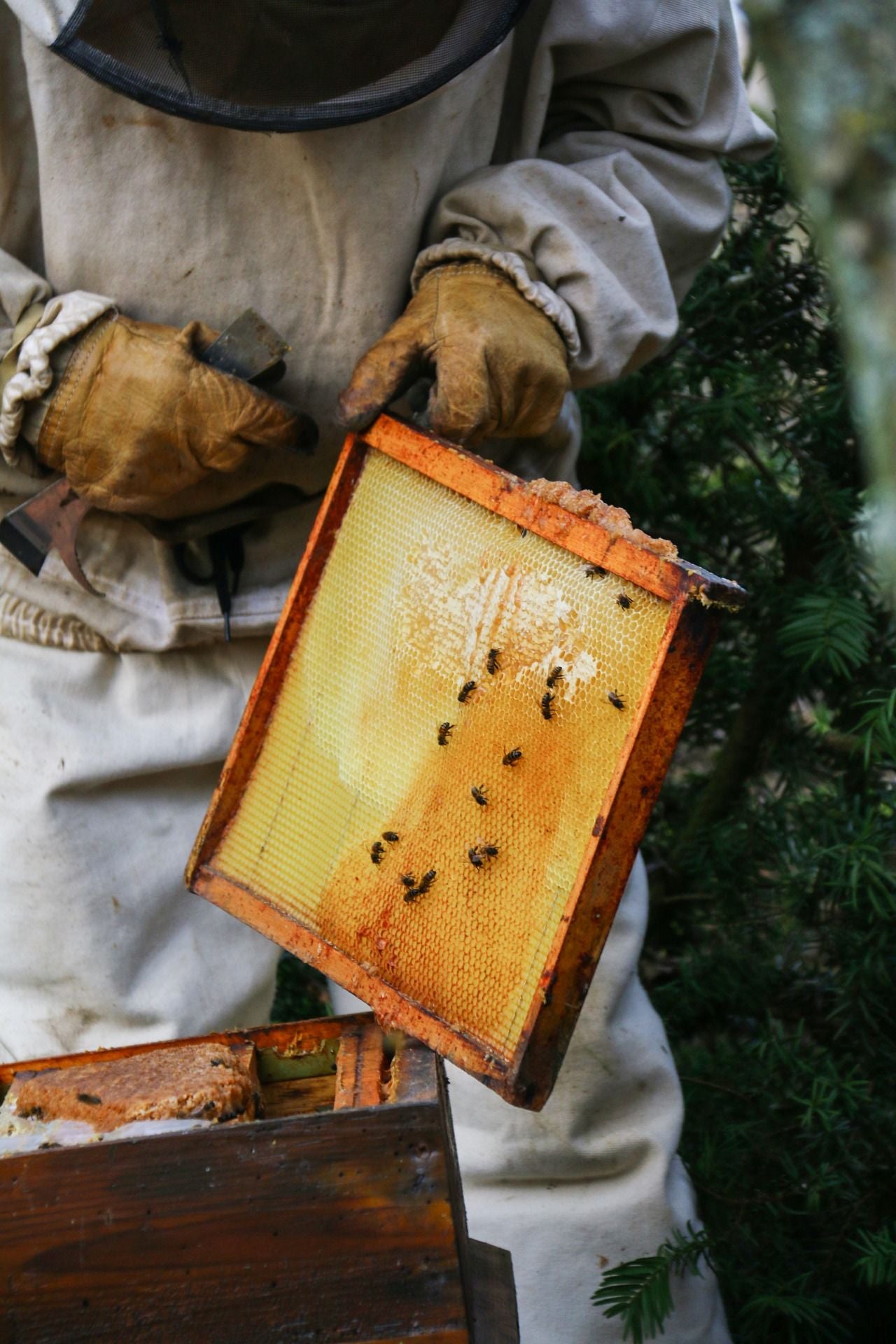10 essential pieces of kit to get you started
Beekeeping isn’t one of those hobbies that you can start on a whim. Unlike jogging or knitting, you need to get set up with a fair bit of equipment before you get started. If you’re a beginner, it can be hard to know which gear is essential and which tools you can live without.
Even if you want to start small, there are a few pieces of equipment that you definitely need. Apart from a hive and frames to fit, you need protective gear for yourself and some specialist tools to help you manage your colony.
Here’s our list of beekeeping essentials to get you started:
1: Hives
It goes without saying that you need a beehive if you want to keep bees. In Australia, the most common types of hive are the top bar and Langstroth models.
In a top bar hive, removable frames hang from the top of the hive box, and honeycomb hangs from each frame. These are easy to manage, as each frame can be removed without disturbing the hive, and you don’t need to crouch or bend to look at your colony.
Langstroth hives are the type most people recognise – with stacked wooden sections and hanging frames inside. Each section can be lifted off to check on the colony inside.
2: Bee suit
A bee suit, along with hat and veil, covers you from head to ankle, with heavy fabric and elasticated closures to protect you from bee stings. Although bees aren’t generally aggressive, they can sting when disturbed, so this is an essential part of your beekeeping kit. If you’re a newbie and you’re nervous about handling bees, being well protected will also give you peace of mind so you can focus on the job at hand.
3: Gloves
To protect your hands, beekeeping gloves are a must. These should be thick but flexible, to allow you to do delicate work without risking a sting. Most beekeeping gloves reach the elbow to give your arms an extra layer of protection as well.
4: Boots
Heavy-duty boots are the final part of your protective kit. Boots should have thick soles and fit closely over the leg of your bee suit to prevent bees from getting in. Although specialist beekeeping boots are available, many beekeepers choose to wear gumboots.
5: Hive tool
A hive tool is a small but incredibly handy bit of bee kit. This clever little helper can be used for a few different jobs, including separating hive boxes, lifting frames out of the hive without damaging the wax, and removing excess wax and propolis from other parts of the hive.
6: Smoker
A smoker is a classic piece of beekeeping equipment for a reason. Smoke masks bee pheromones and helps keep your bees calm and docile while you work. With an efficient modern smoker, it’s easy to gently puff smoke over your bees while you’re working, reducing your chances of being stung.
7: Bee brush
If you’re not a beekeeper, brushing your bees might sound silly, but it’s actually an effective way to move them around the hive. A bee brush can be used to move bees off frames during an inspection, herd them into a box while they’re swarming, or brush them off your clothes after you’ve checked the hive. Soft, natural bristles mean you can gently nudge bees along without hurting them or damaging their wings.
8: Queen catcher
Sometimes you need to isolate the queen for a while, which is where the queen catcher comes in handy. This little tool lets you catch and examine your queen without hurting her.
9: Feeder
Although bees feed themselves very efficiently during spring and summer, many beekeepers choose to supplement their colonies with sugar syrup or honey to get them through winter. Feeders are essentially plastic containers designed to slot into the hive and hold sugar syrup, honey, or dry sugar.
10: Capping scratcher
A capping scratcher is a narrow brush with sharp wire bristles. This tool can be used to scratch open – or uncap – wax cells during honey extraction, or to open single cells to inspect larvae and check for disease. Although a sharp knife can be used in a pinch, a capping scratcher makes the job easier.
Consult other beekeepers
Although this list should help get you started, you might find that you need more equipment once you get into the swing of beekeeping. Every beekeeper has different preferences about tools and methods, so it’s a good idea to talk to beekeepers in your area and read online forums to get a range of opinions.
Need more advice about equipment?Talk to the experts at Ecrotek now.

